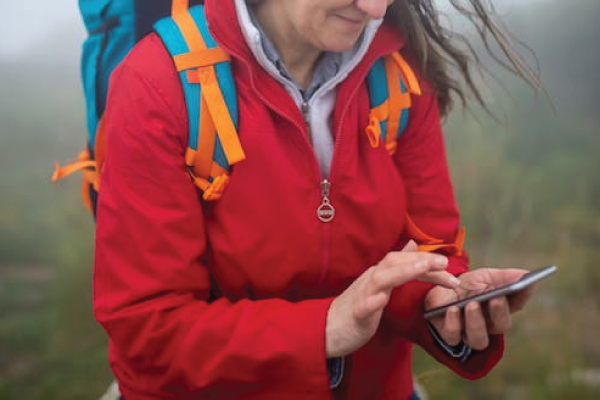A Critical Event Management Company
A Guide to SOS Devices
 How They Work and How to Choose the Right One
How They Work and How to Choose the Right One
In emergency situations, time is of the essence. Whether you're lost in the wilderness, injured on the job, or facing another crisis scenario, being able to signal for help quickly and reliably can make all the difference; that's where SOS devices come in.
We will explore SOS devices in-depth and provide a guide to choosing the right device for your needs. We will cover the basics of SOS devices, how they work, and the factors to consider when choosing one. By the end of this article, you will have a solid understanding of SOS devices and be able to select the right device to keep you safe in emergency situations.
What are SOS Devices?
SOS devices are handheld or wearable communication devices that allow users to send out distress signals in an emergency. These devices operate on satellite networks and transmit data, voice messages, and GPS coordinates to emergency response teams. They are designed to provide reliable communication in emergencies and help individuals send out distress signals quickly.
SOS devices are especially useful in remote areas where cellular networks may be unavailable or unreliable. They can be used by hikers, mountaineers, offshore workers, and others who work or travel in hazardous environments. In these situations, having a reliable communication device can mean the difference between life and death.
The importance of SOS devices in crisis response critical event management cannot be overstated. In emergencies, when communication networks are down or overloaded, these devices can help individuals send distress signals and receive assistance quickly. They can also help emergency response teams locate individuals who may be stranded or injured in remote areas.
SOS devices come in different types and sizes, each with its own unique features and capabilities. The next section will explore the different kinds of SOS devices available.
 Types of SOS Devices
Types of SOS Devices
There are several types of SOS devices available in the market. The most popular types of SOS devices include personal locator beacons (PLBs), satellite phones, and emergency radios. Each of these devices has its own unique features and capabilities, making them suitable for different types of users and situations.
Personal Locator Beacons (PLBs) are small, battery-powered devices that are designed to be carried by individuals in remote areas. They are equipped with a GPS receiver that can send out distress signals to search and rescue teams in case of an emergency. PLBs usually have a range of up to several miles and can transmit signals through satellite networks. Some PLBs also come with additional features, such as two-way communication and navigation assistance.
Satellite phones allow users to make voice calls, send text messages, and access the internet using satellite networks. These devices are especially useful in areas where cellular networks are unavailable or unreliable. Satellite phones can also be used to send out distress signals to emergency response teams. Some satellite phones also come with additional features such as GPS tracking and weather updates.
Emergency radios are another type of SOS device that can be used to receive and transmit emergency messages. They operate on various frequencies and can be used to communicate with other radios or emergency response teams. Emergency radios are useful for individuals working or traveling in areas without cellular or satellite network coverage.
Choosing the right SOS device depends on several factors, including the user's needs and budget. The next section will explore how SOS devices work and the technologies used to transmit distress signals in emergencies.
 How SOS Devices Work
How SOS Devices Work
SOS devices use a combination of technologies to transmit distress signals in emergency situations. The main technologies used by SOS devices include satellite networks, GPS technology, and the transmission of data and voice messages.
Satellite networks are used by most SOS devices to transmit distress signals. These networks consist of a constellation of satellites that orbit the Earth and provide global coverage. SOS devices communicate with these satellites to send distress signals, which are relayed to ground stations and emergency response teams.
GPS technology is also used by many SOS devices to provide accurate location data. GPS receivers are built into most SOS devices, allowing them to determine the user's location and transmit it to emergency response teams. This information is critical in locating individuals who may be stranded or injured in remote areas.
Transmission of data and voice messages is another important aspect of SOS devices. Most SOS devices can transmit data and voice messages through satellite networks or other radio frequencies. This allows users to send out detailed distress messages and communicate with emergency response teams. Some SOS devices also come with two-way communication features, enabling users to receive updates and instructions from emergency response teams.
Overall, SOS devices use a combination of technologies to provide reliable communication in emergency situations. The following section will explore the factors to consider when choosing an SOS device and the different features and capabilities to look for.
 Choosing an SOS Device
Choosing an SOS Device
Choosing the right SOS device depends on several factors, including the user's needs and budget. Here are some factors to consider when selecting an SOS device:
Coverage:
SOS devices rely on satellite networks to transmit distress signals. It's important to choose a device that provides global coverage and works in the areas where you will be traveling or working.
Battery Life:
SOS devices require battery power to operate. Look for a device with long battery life or one that allows for battery replacement or recharging in the field.
Durability:
SOS devices may be exposed to harsh weather conditions, impacts, or water damage. Look for a device that is rugged and designed to withstand these conditions.
Features:
SOS devices come with a range of features, including GPS tracking, two-way communication, and navigation assistance. Choose a device that has what you need for your specific use case.
Cost:
SOS devices can range in price from a few hundred dollars to thousands. Consider your budget, and look for one that provides the features you need at a price you can afford.
When choosing an SOS device, it's important to research and read reviews from other users. Look for a device with a good reputation for reliability and performance, and make sure you understand how to use it properly in an emergency.
 Summary:
Summary:
SOS devices are essential tools for anyone who may find themselves in emergency situations. Whether you're an adventurer exploring remote destinations, a worker in a hazardous location, or a traveler visiting unfamiliar places, having an SOS device can provide peace of mind and potentially save your life.
When choosing an SOS device, it's essential to consider the features and capabilities that are most important to you. Some devices may offer more advanced features, such as two-way communication and GPS tracking, while others may be more basic and affordable.
Regardless of the device you choose, it's important to familiarize yourself with its features and how to use it properly in an emergency. This includes testing it before your trip or venture and knowing how to activate the SOS signal if necessary.
In addition to having an SOS device, it's also important to have a plan in place for emergencies. This may include knowing how to signal for help, carrying first aid supplies, and knowing the location of the nearest emergency services.
Overall, SOS devices are powerful tools that can provide peace of mind and potentially save lives in emergency situations. By choosing the right device and being prepared for emergencies, you can stay safe and confident during your travels or work in remote and hazardous locations.
